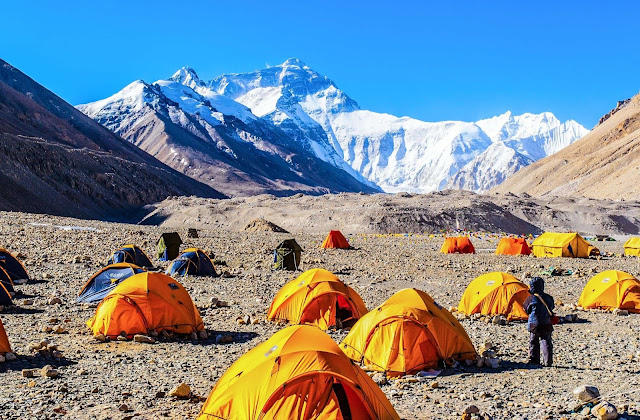Everest Base Camp Trek Difficulty
One of the most attractive tourist
destinations, Everest is known for its magnificence beauty, hills and peaks.
Apart from its physical beauty, this place is a paradise for trekkers. Everest
Base Camp or EBC is by far the best way to have a close encounter with
Everest’s snow-capped mountain ranges and the lush greenery. Trekking at an
altitude of 17600 feet, steep rocks, quaint villages, and grassy paths will
surely leave you spellbound.
1. Training for Everest Base Camp Trek
Although not a compulsory activity, it
is good if you train yourself. Training yourself for the Everest Base Camp will
prepare you to enjoy the trek fully. To begin with, develop a cardiovascular
exercise routine such as hiking, jogging, cycling or swimming. If none of them
is a part of your current routine, you can start it a few weeks before your
arrival at Kathmandu airport. These are stamina and physical endurance
boosters. Also, it is advisable to stroll while you start with your actual
trekking. This will help you to eliminate all forms of altitude sicknesses.
Suggested Read: Andaman Tourism
Suggested Read: Andaman Tourism
2. Length of EBC Trek
A typical length of Everest Base Camp
(in terms of days) will be 15 days and 14 night. You can take a look at the
overview of your Everest Base Camp itinerary –
Day 1 – Arrival at Kathmandu Airport
Day 2 – Travel to Lukla followed by
Phakding trek
Day 3 – Trek to Namche Bazaar
Day 4 – Namche Bazaar Acclimatization
Day 5 – Trek to Tengboche
Day 6 – Trek to Dingboche
Day 7 – Dingboche acclimatization
Day 8 – Trek to Dughla or Thukla
Day 9 – Trek to Lobuche
Day 10 – Trek to Gorakshep followed by
a trek to Everest Base Camp
Day 11 – Kala Patthar hiking
Day 12 – Trek to Namche Bazaar
Day 13 – Trek to Lukla
Day 14 – Travel to Kathmandu
3. Altitude of Everest Base Camp Trek
The most challenging element of your
Everest Base Camp will be the elevation or altitude. Even at its starting point
Lukla Airport, you will be standing at an altitude of 2600 m. As you start
trekking, your daily elevation gains will be around 400 to 800 metres per day.
Kala Patthar is the highest point of this trek witnessing an elevation of 5500
m. As the altitude shows a gradual variation, you might likely come across
certain health disorders. Therefore, it is recommended to gain altitude slowly
accompanied by scheduled acclimatization.





Comments
Post a Comment